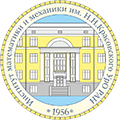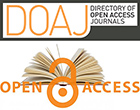A NEW ALGORITHM FOR ANALYSIS OF EXPERIMENTAL MÖSSBAUER SPECTRA
Abstract
A new approach to analyze the nuclear gamma resonance (NGR) spectra is presented and justified in the paper. The algorithm successively spots the Lorentz lines in the experimental spectrum by a certain optimization procedures. In Mössbauer spectroscopy, the primary analysis is based on the representation of the transmission integral of an experimental spectrum by the sum of Lorentzians. In the general case, a number of lines and values of parameters in Lorentzians are unknown. The problem is to find them. In practice, before the experimental data processing, one elaborates a model of the Mössbauer spectrum. Such a model is usually based on some additional information. Taking into account physical restrictions, one forms the shape of the lines which are close to the normalized experimental Mössbauer spectrum. This is done by choosing the remaining free parameters of the model. However, this approach does not guarantee a proper model. A reasonable way to construct a structural NGR spectrum decomposition should be based on its model-free analysis. Some model-free methods of the NGR spectra analysis have been implemented in a number of known algorithms. Each of these methods is useful but has a limited range of application. In fact, the previously known algorithms did not react to hardly noticeable primary features of the experimental spectrum, but identify the dominant components only. In the proposed approach, the difference between the experimental spectrum and the known already determined part of the spectral structure defines the next Lorentzian. This method is effective for isolation of fine details of the spectrum, although it requires a well-elaborated algorithmic procedure presented in this paper.
Keywords
Full Text:
PDFReferences
Koloskov V.M., Derjaguin A.I., Vil'danova N.F., Gapontsev V.L. Concentration and structural transformations in austenitic iron-based chromium-nickel alloys under severe plastic deformation // Physical Mesomechanics, 2006. Vol. 9, no. 5. P. 97–106.
Rusakov V.S. Mossbauer spectroscopy of heterogeneous systems. Almaty, 2000. 431 p. [in Russian].
Pyt'ev Yu.P. Mathematical Analysis Methods of the Experiment. Moscow: Vyssh. School, 1989. 352 p. [in Russian].
Ustinov V.V., Tsurin V.A., Romashev L.N., Ovchinnikov V.V. Mössbauer spectroscopy of interlayer boundaries in magneto-noncollinear [\({}^{57}\)Fe/Cr]\({}_{12}\)/MgO(100) superlattices // Technical Physics Letter, 1999. Vol. 25, no. 6. P. 459–461.
Article Metrics
Refbacks
- There are currently no refbacks.













